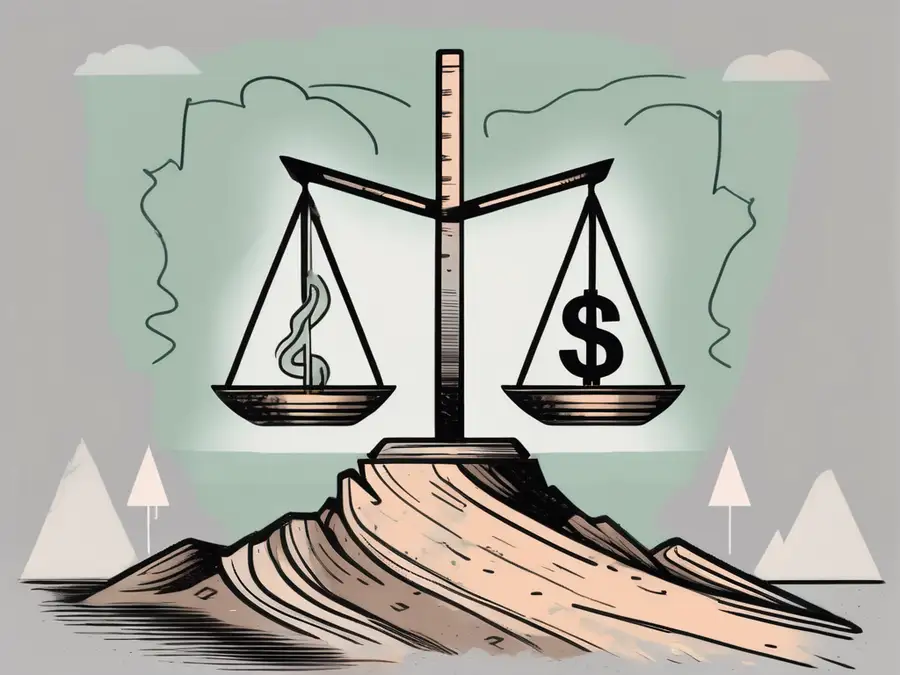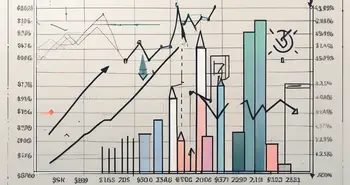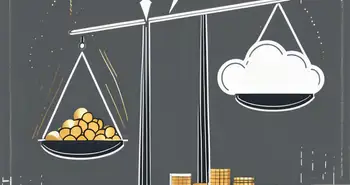Maximizing Your Risk Return Ratio

As an experienced investor, I understand the importance of maximizing the risk return ratio in order to achieve financial success. In this comprehensive guide, I will take you through the ins and outs of this crucial concept, explaining its definition, significance, and the factors that influence it. I will also provide you with strategies to help you make the most of your risk return ratio and avoid common mistakes along the way.
Understanding the Risk Return Ratio
Before we dive into the details, let's start by defining the risk return ratio. Simply put, it is the relationship between the amount of risk an investment carries and the potential return it offers. This ratio helps investors assess the level of risk they are comfortable with in relation to the potential reward they can expect.
When considering the risk return ratio, it's essential to remember that all investments come with a degree of risk. Whether you're investing in stocks, bonds, real estate, or other assets, understanding the risk return ratio can help you navigate the complex world of finance with more confidence and clarity.
Definition of Risk Return Ratio
The risk return ratio is calculated by dividing the expected return of an investment by its standard deviation, which measures its volatility. Essentially, it quantifies the risk you are taking on in relation to the potential return you could earn.
Standard deviation is a statistical measure that reflects the degree of variation or dispersion of a set of values. In the context of the risk return ratio, a higher standard deviation indicates that an investment's returns are more volatile, while a lower standard deviation suggests more stability in returns over time.
Importance of Risk Return Ratio in Investment
The risk return ratio is a crucial concept in investment decision-making. It allows you to evaluate different investment opportunities and determine which ones align with your risk appetite and financial goals. By understanding the risk return ratio, you can make more informed decisions and optimize your investment portfolio.
Furthermore, the risk return ratio serves as a valuable tool for comparing the risk-adjusted returns of various investments. By considering both the potential return and the level of risk associated with an investment, you can assess whether the risk return ratio is favorable and in line with your investment strategy.
Factors Influencing the Risk Return Ratio
Now that we have a clear understanding of the risk return ratio, let's explore the factors that can influence it.
Market Volatility
Market volatility refers to the degree of price fluctuations in a particular market. Investments in volatile markets tend to carry higher risks but also offer the potential for higher returns. It's crucial to carefully assess market conditions and consider the volatility of the investment before making any decisions.
Investment Duration
The length of time you plan to hold an investment can have a significant impact on its risk return ratio. Generally, investments with longer durations tend to have higher potential returns but also come with increased risks. Understanding your investment timeline is essential for optimizing your risk return ratio.
Asset Diversification
Proper asset diversification is a key factor in managing risk and maximizing the risk return ratio. By spreading your investments across different asset classes, industries, and geographical regions, you can reduce the impact of any single investment's performance on your overall portfolio. Diversification is a powerful risk management strategy that can enhance your chances of achieving consistent returns.
Strategies to Maximize Risk Return Ratio
Now that we have discussed the factors influencing the risk return ratio, let's explore some strategies to maximize it and boost your investment performance.
Asset Allocation and Diversification
One of the most effective ways to optimize your risk return ratio is through proper asset allocation and diversification. By allocating your portfolio across different asset classes such as stocks, bonds, and real estate, and diversifying within each class, you can balance the risk and return of your investments.
Timing the Market
Timing the market refers to the practice of buying and selling investments based on predictions of market trends. While it is difficult to consistently time the market accurately, strategic buying during market dips and selling during market highs can enhance your risk return ratio. It is important to approach market timing cautiously and conduct thorough research before making any decisions.
Using Derivatives for Hedging
Derivatives, such as options and futures, can be valuable tools for hedging against potential losses. They allow investors to protect their portfolio against adverse market movements while still benefiting from potential gains. Skillfully utilizing derivatives can improve your risk return ratio and provide you with a hedging mechanism in volatile markets.
Personal Advice:
Throughout my investment journey, I have learned that maximizing the risk return ratio requires a careful balance between risk and reward. It is essential to thoroughly analyze investment opportunities, understand your risk tolerance, and diversify your portfolio effectively.
One key piece of advice I can offer is to stay disciplined and avoid making impulsive investment decisions based on short-term market fluctuations. Instead, focus on your long-term financial goals and make informed choices that align with your risk appetite.
Remember, investing is a marathon, not a sprint. Patience, knowledge, and a well-diversified portfolio are your best allies in maximizing your risk return ratio.
Measuring Your Risk Return Ratio
Now that we have covered the foundation of the risk return ratio, let's explore how you can measure it effectively.
Tools for Measuring Risk Return Ratio
There are various tools available to help you calculate and compare the risk return ratios of different investments. Some commonly used tools include statistical measures like standard deviation and Sharpe ratio. It is essential to familiarize yourself with these tools and utilize them to make informed investment decisions.
Interpreting Risk Return Ratio Results
When analyzing the risk return ratio results, it's important to consider the context and your personal investment goals. A higher ratio indicates potentially higher returns relative to risk, while a lower ratio suggests lower returns for the amount of risk taken on. It's crucial to compare risk return ratios across similar investments and evaluate them within the framework of your overall investment strategy.
Mistakes to Avoid When Maximizing Risk Return Ratio
While striving to optimize your risk return ratio, it's important to steer clear of common pitfalls that can hamper your investment success.
Overlooking Inflation Risk
One common mistake investors make is overlooking the risk of inflation. Inflation erodes the purchasing power of your returns, and failing to consider this factor can lead to subpar performance in the long run. It's crucial to factor in the impact of inflation when assessing your risk return ratio and adjust your investments accordingly.
Ignoring Tax Implications
Another mistake to avoid is ignoring tax implications. Taxes can significantly impact your investment returns, and failing to account for them can undermine your risk return ratio. Consider consulting with a tax professional or financial advisor to develop a tax-efficient investment strategy.
Neglecting Liquidity Risk
Liquidity risk refers to the difficulty or cost of converting an investment into cash quickly. Neglecting this aspect when assessing your risk return ratio can lead to unforeseen obstacles, especially during times of economic uncertainty. It's essential to carefully consider the liquidity of your investments and have a well-diversified portfolio that provides enough liquidity to meet your financial needs.
FAQ – Frequently Asked Questions
What is the risk return ratio?
The risk return ratio is a measure of the relationship between the amount of risk an investment carries and the potential return it offers. It helps investors assess the level of risk they are comfortable with in relation to the potential reward they can expect.
How do market volatility and investment duration influence the risk return ratio?
Market volatility and investment duration are key factors in determining the risk return ratio. Investments in volatile markets tend to carry higher risks and potential returns. Likewise, investments with longer durations generally have higher potential returns but also higher risks.
What strategies can I use to maximize my risk return ratio?
Some strategies to maximize your risk return ratio include proper asset allocation and diversification, timing the market cautiously, and utilizing derivatives for hedging.
How can I measure my risk return ratio?
You can measure your risk return ratio using tools such as standard deviation and Sharpe ratio. These tools allow you to compare the risk-return profiles of different investments.
What mistakes should I avoid when maximizing my risk return ratio?
Some common mistakes to avoid include overlooking inflation risk, ignoring tax implications, and neglecting liquidity risk.
In conclusion, maximizing your risk return ratio is crucial for achieving financial success in the world of investments. By understanding the concept, considering the influencing factors, implementing effective strategies, and avoiding common mistakes, you can optimize your risk return ratio and pave the way for long-term profitability. Remember, being a successful investor requires discipline, knowledge, and a well-informed approach. Start maximizing your risk return ratio today and watch your investments flourish.
Ready to take your investment strategy to the next level with a platform that aligns perfectly with the principles of maximizing your risk return ratio? Look no further than Morpher, the revolutionary trading platform that leverages blockchain technology to offer zero fees, infinite liquidity, and the flexibility of fractional investing. With Morpher, you can also engage in short selling across various markets and utilize up to 10x leverage to enhance your trading potential. Experience the future of trading with Morpher's unique Virtual Futures and take control of your investments with the secure Morpher Wallet. Sign Up and Get Your Free Sign Up Bonus today to transform your trading experience and optimize your risk return ratio with Morpher.

Disclaimer: All investments involve risk, and the past performance of a security, industry, sector, market, financial product, trading strategy, or individual’s trading does not guarantee future results or returns. Investors are fully responsible for any investment decisions they make. Such decisions should be based solely on an evaluation of their financial circumstances, investment objectives, risk tolerance, and liquidity needs. This post does not constitute investment advice.

Painless trading for everyone
Hundreds of markets all in one place - Apple, Bitcoin, Gold, Watches, NFTs, Sneakers and so much more.

Painless trading for everyone
Hundreds of markets all in one place - Apple, Bitcoin, Gold, Watches, NFTs, Sneakers and so much more.









